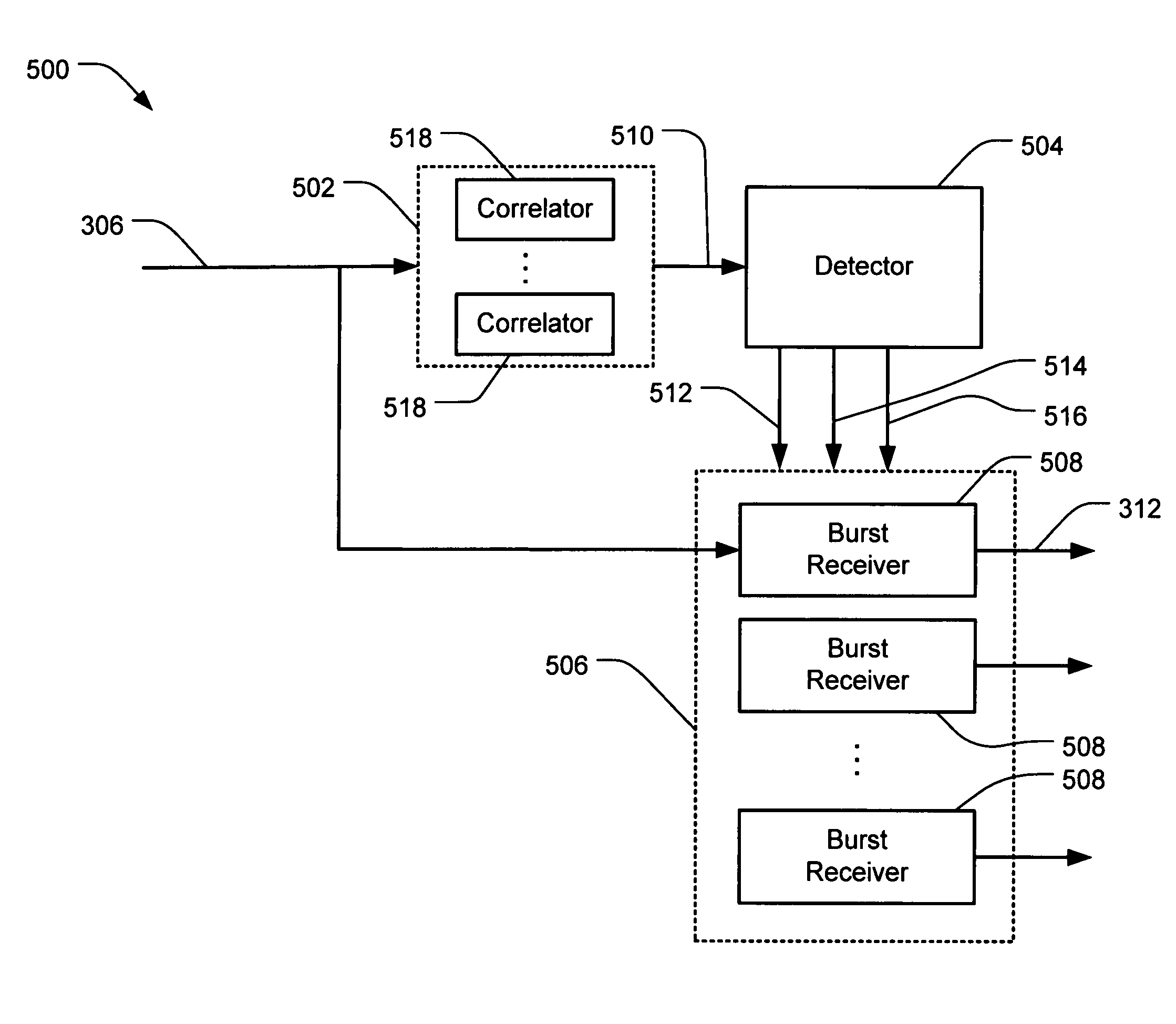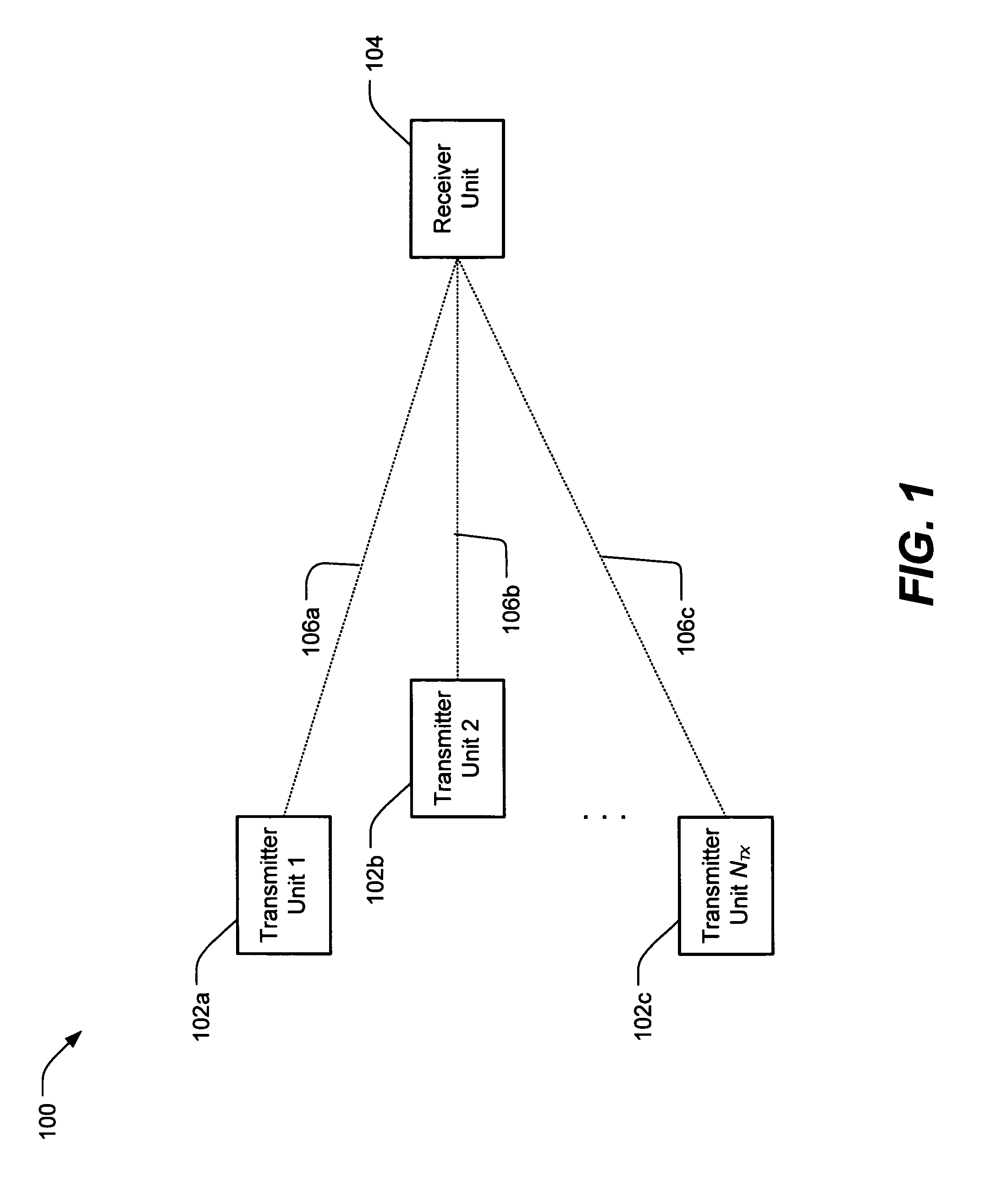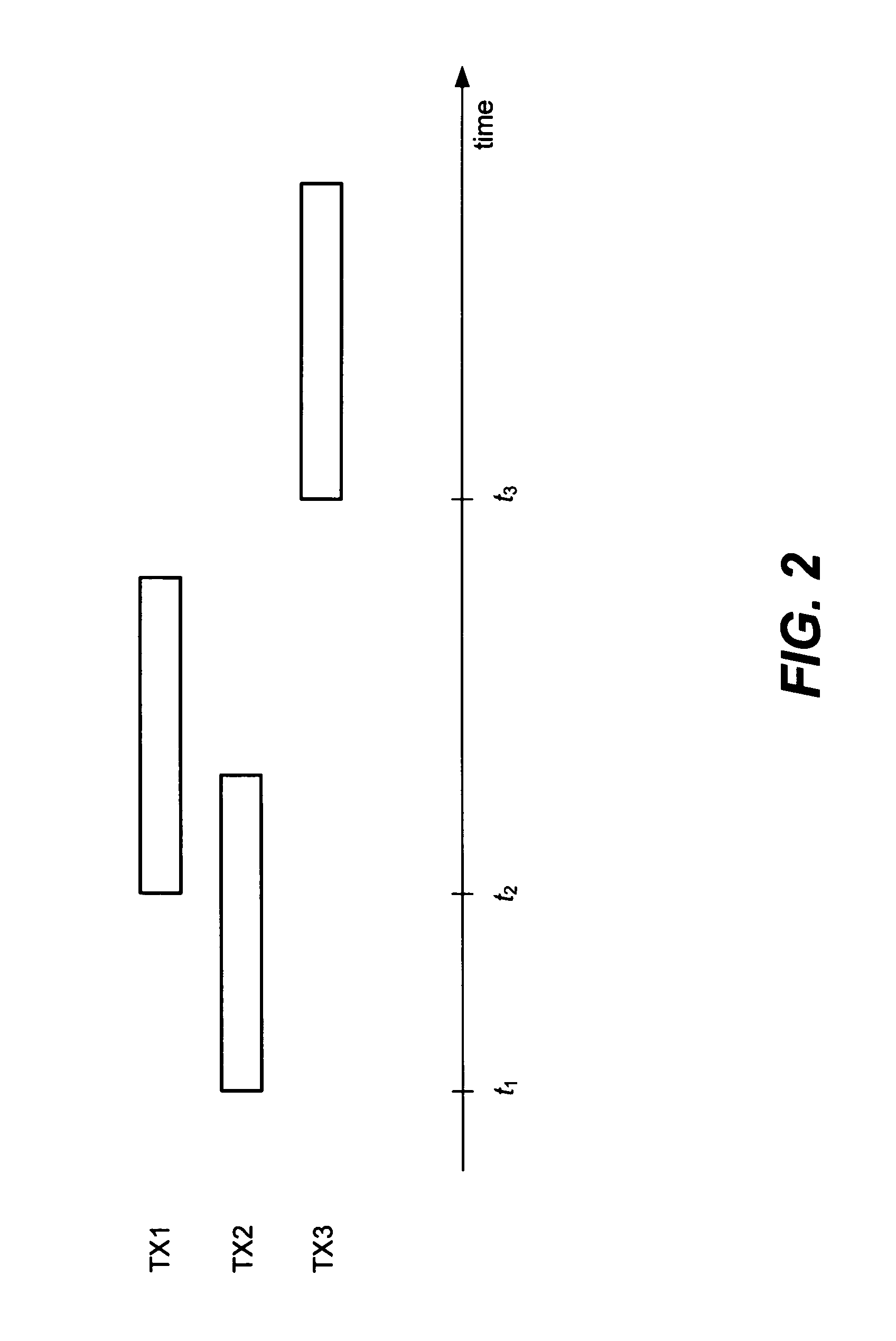System and method for receiving spread spectrum encoded bursts using a common spreading code
a spread spectrum encoded and encoded technology, applied in the direction of digital transmission, amplitude demodulation, pulse technique, etc., can solve the problems of reducing the communication efficiency of the spread spectrum system, unable to achieve synchronization and unable to achieve the effect of synchronizing to the spread aloha signal
- Summary
- Abstract
- Description
- Claims
- Application Information
AI Technical Summary
Benefits of technology
Problems solved by technology
Method used
Image
Examples
Embodiment Construction
[0017]Reference will now be made to the exemplary embodiments illustrated in the drawings, and specific language will be used herein to describe the same. It will nevertheless be understood that no limitation of the scope of the invention is thereby intended. Alterations and further modifications of the inventive features illustrated herein, and additional applications of the principles of the inventions as illustrated herein, which would occur to one skilled in the relevant art and having possession of this disclosure, are to be considered within the scope of the invention.
[0018]A system of communication using a common spreading code is illustrated in FIG. 1 in accordance with an embodiment of the present invention. The system, shown generally at 100, includes a plurality of transmitter units 102 which each independently transmits a unit-unique message. The unit-unique messages are spread spectrum encoded with the common spreading code. For example, encoding may be performed using ...
PUM
 Login to View More
Login to View More Abstract
Description
Claims
Application Information
 Login to View More
Login to View More - R&D
- Intellectual Property
- Life Sciences
- Materials
- Tech Scout
- Unparalleled Data Quality
- Higher Quality Content
- 60% Fewer Hallucinations
Browse by: Latest US Patents, China's latest patents, Technical Efficacy Thesaurus, Application Domain, Technology Topic, Popular Technical Reports.
© 2025 PatSnap. All rights reserved.Legal|Privacy policy|Modern Slavery Act Transparency Statement|Sitemap|About US| Contact US: help@patsnap.com



